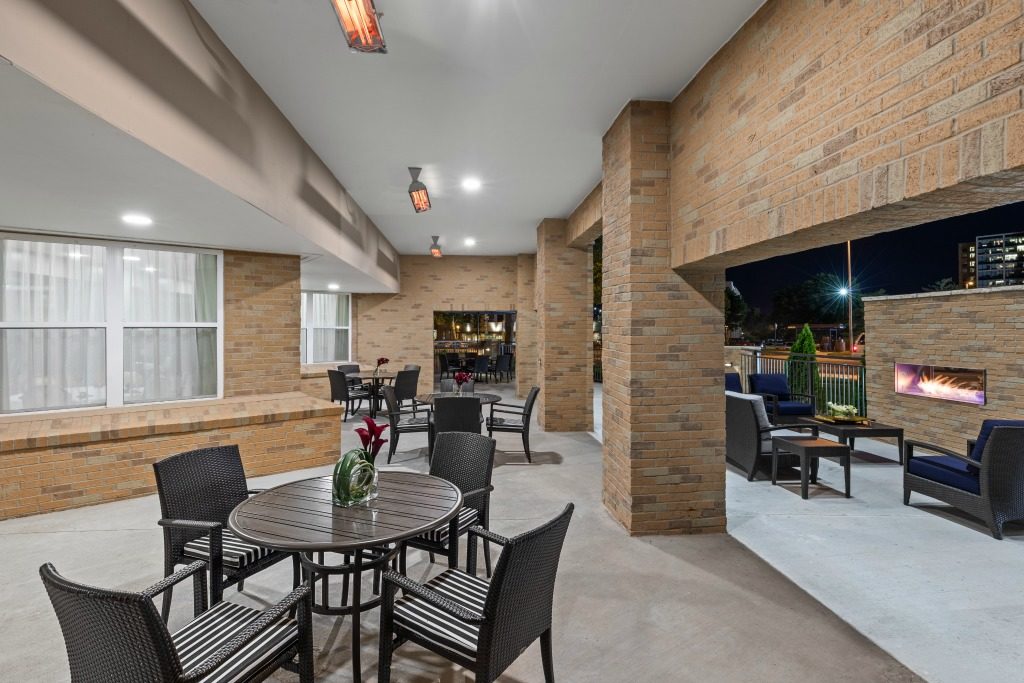As the U.S. gradually reopens after nearly four months of lockdowns in response to the coronavirus pandemic, senior living communities can take cues from how various businesses operate in the new normal.
Plans for restaurants operating at reduced capacities or with only socially distanced, outdoor dining can be adopted by providers looking to re-open dining rooms. Curbside service and meal deliveries can be leveraged for residents to engage with each other over themed meals and activities. Outdoor spaces can be repurposed into small gathering spots. And anti-microbial surfaces and ultraviolet light can be used as disinfectants and to protect residents.
With the industry facing at least another 18 months of pain stemming from the pandemic, operators waiting for a vaccine will be ill-prepared to maintain operations, or keep residents and staff safe in the short term, GlynnDevins Outgoing President, East Coast Sharon Brooks said Tuesday during a webinar hosted by architecture and design firm Perkins Eastman.
There are four stages to the pandemic: the crisis mode of its early weeks; the containment of the virus in April and May; management; and an extended “next normal” which the industry will be in until a vaccine is available, Brooks said. Senior living is currently in the management phase, ensuring residents, prospective move-ins and their loved ones that they will be taken care of as the pandemic persists. Operators still scrambling in response to the crisis need to prioritize care and have a plan in place, in what is a still-volatile landscape.
“The best scientific thinking indicates it’s going to take 18 to 24 months before we can go back to true normal, and our communities just simply can’t wait 18 to 24 months,” she said.
Re-envisioned dining
The first step to accepting the new reality is to embrace the fear of a host of unknowns. The fluid nature of the virus, and the response from the Centers for Disease Control and Prevention (CDC), as well as state and local public health authorities, has informed the public’s perceptions of the virus.
One of the biggest fears is reopening dining services that have been reduced to in-room meal delivery for the past three-plus months. Associates have not had to wait a table during the pandemic, and most diners will likely not wear masks once they sit down because they need to eat.
Moreover, dining is primarily a social activity and congregating in large groups increases the risk of transmitting the virus. Providers need to look at ways to reduce congregation while still enhancing the social component of dining, Perkins Eastman Principal Joe Hassel said.
The firm identified ways for providers to take charge of these situations. Providers should be implementing reservation systems, including calls or texts reminding residents when their reservation time is ready. Host stations can be repositioned outside the restaurant venue, allowing a host to further control the congregation process. This also gives hosts the agency to control the flow of foot traffic in and out of the restaurant, as well as within the dining room.
“The key here is to give ownership to the host,” he said.
Research conducted by Perkins Eastman indicates that providers expect to see a 30% to 40% increase in takeout meals. This suggests that meal delivery must remain an option for residents still skittish about visiting a dining room in the short term. Kitchens can accommodate these residents by creating curated takeout meals and meal kits, which can be prepared in a residential unit. These themed kits can also be used to connect residents to each other through virtual theme nights.
Happy hours have been reimagined, as well, John Knox Village Chief Marketing and Innovation Officer Monica McAfee said. The Orange City, Florida continuing care retirement community shifted its large quarterly happy hours to a “bar car” concept, using golf carts set up in front of each building.
“If you’ve been golfing and know you’ve got someone running around getting things for you, the residents love that,” she said.
Removing touchpoints, better disinfection
The other fear to overcome involves keeping residents from touching hard surfaces as much as possible. Heightened hand washing and cleaning protocols will remain in place for the foreseeable future, but they will be shunted into the background to give residents a sense of normalcy, Hassel said.
Anti-microbial coatings and films will gain in popularity as providers continue to manage through the pandemic, BIOS Vice President, Biological Research and Technology Robert Soler said. These materials are applied to high-touch surfaces such as doorknobs and countertops in order to inhibit the growth of bacteria.
Some providers are handing out touchless door openers to residents as a way to reduce touchpoints. These devices can be used to press elevator buttons and keypads, and have anti-microbial material on an endpoint, and can be used as a stylus on touchscreen devices.
Another thing that providers can do to increase resident safety is increase ventilation within a community’s common areas and residential units. This ensures that the inside air is being diluted with more exhaust fans, Soler said.
Ultraviolet radiation holds potential in future disinfection protocols, but not all UV light is the same. Soler recommends UV-C lighting, which is proven to kill the coronavirus within seconds without harming the skin. There are drawbacks to this. In order for UV light to work, there must be a direct line of sight. Furthermore, UV light can degrade materials and create ozone, and the lights do not last long.
UV robots, cleaning rooms nightly, might become common as the industry moves forward, Soler believes. But they are costly, at around $30,000 per unit.
None of these is a panacea, however.
“I think it’s a combination of these things that you should try to employ in your space to try to make sure that you’re disinfecting on different levels,” he said.


